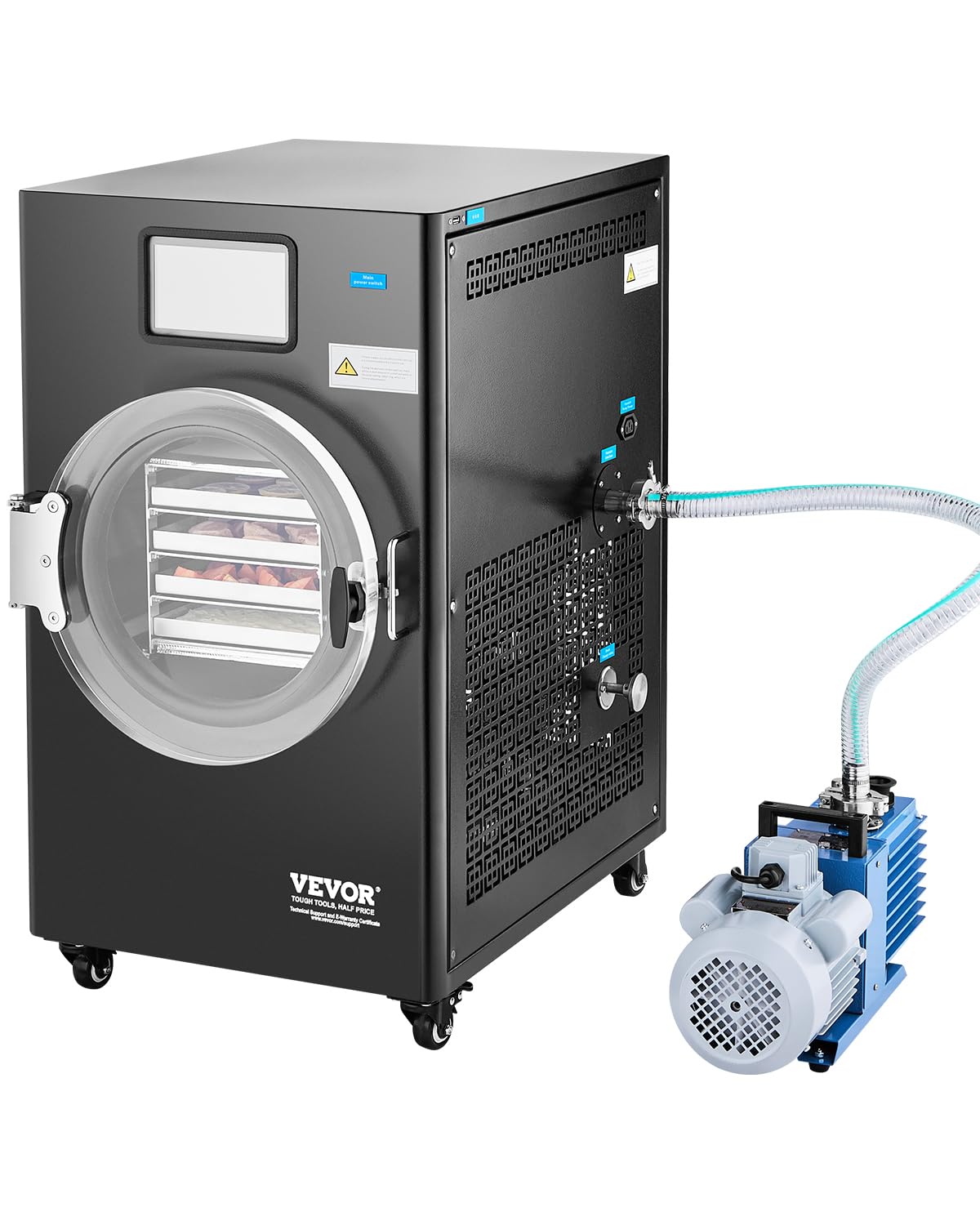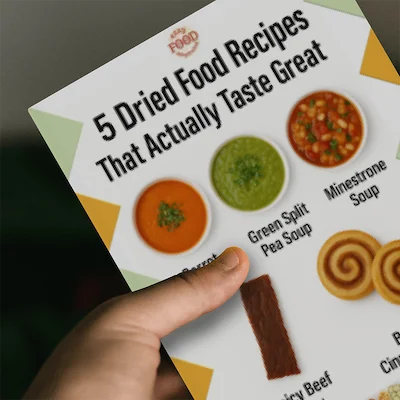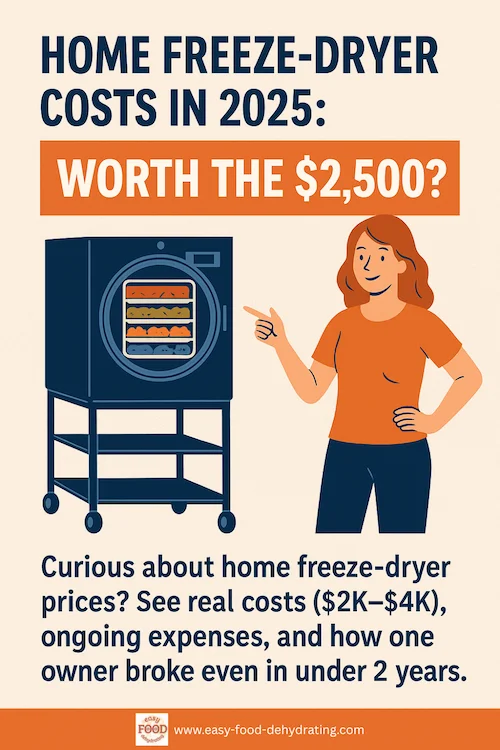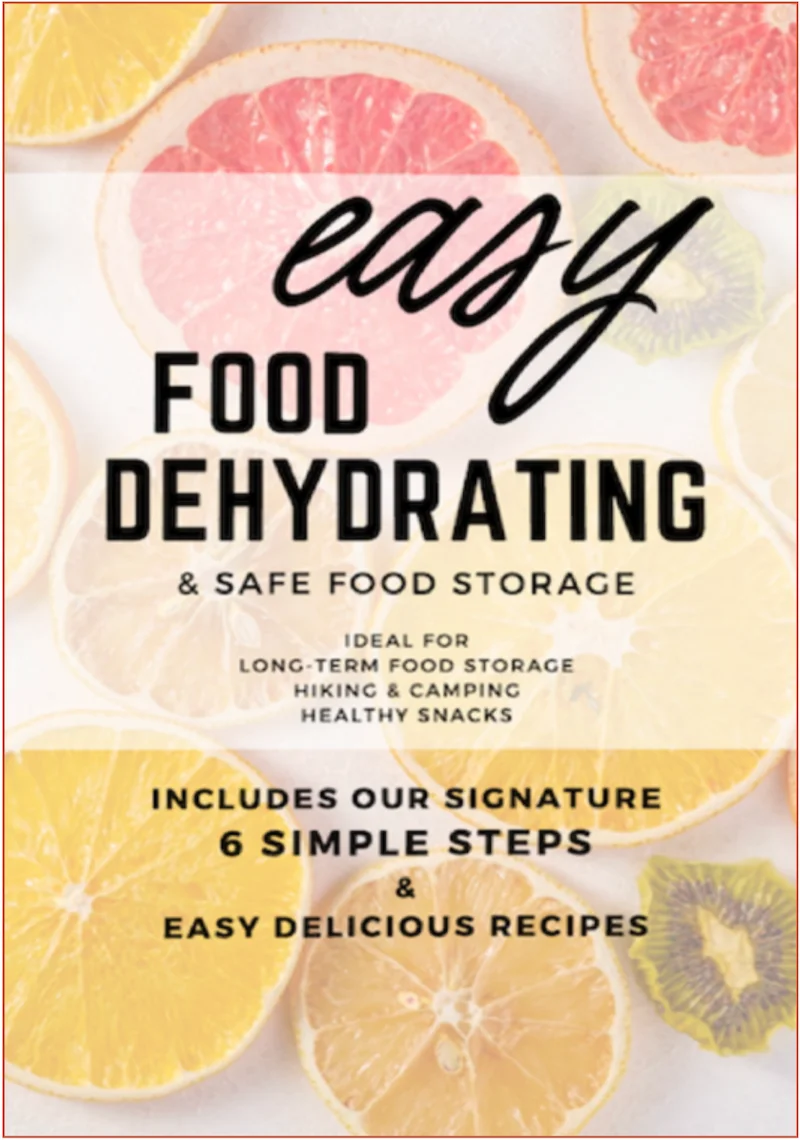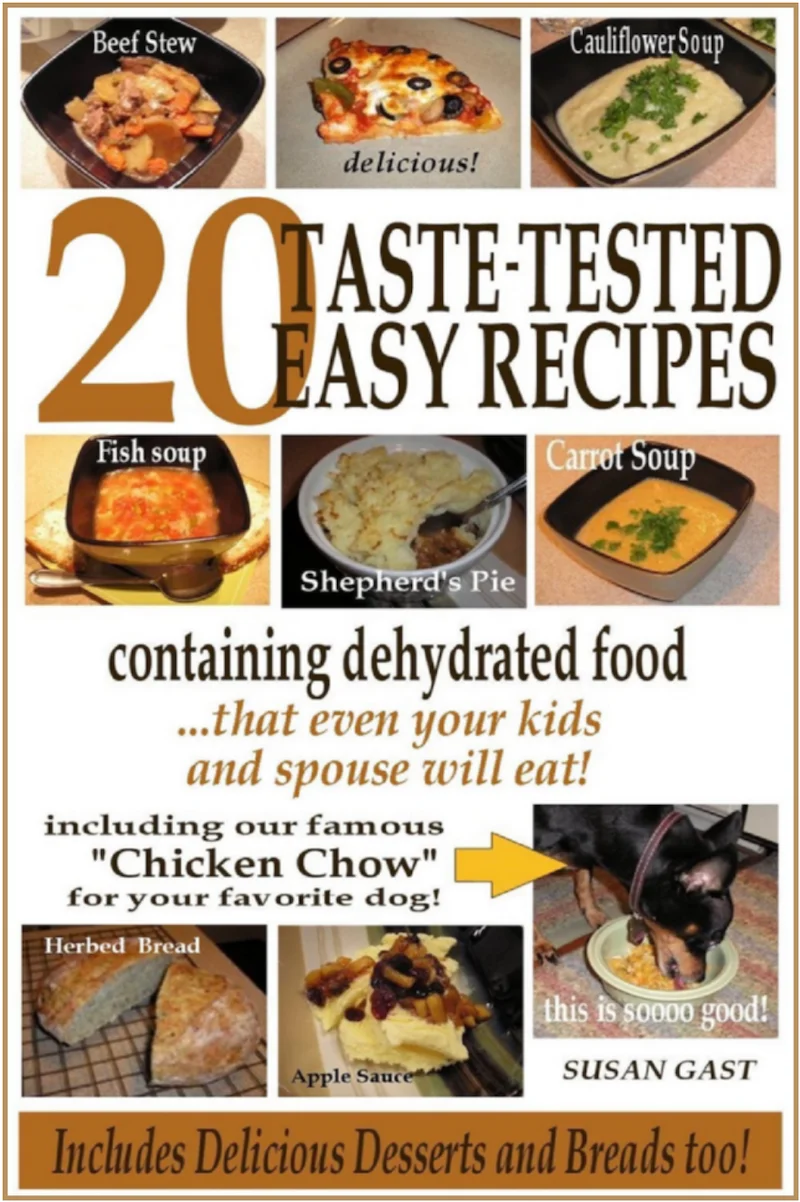What We Mean by “Dehydrate”
Here at Easy Food Dehydrating, “dehydrate” always means using an electric food dehydrator — the easy, reliable way to dry food at home.
- Home
- Articles On How To Dehydrate Food Safely
- Home Freeze-Dryer Cost
Home Freeze-Dryer Costs 2025: Is $2,500 Worth It?

Curious how much a home freeze-dryer really costs - and whether it’s worth it? You’re not the only one asking.
✅ Quick Answer: How much does a home freeze-dryer cost and is it worth it?
- Typical Price Range: $2,000 – $4,000 for most home freeze-dryer models
- Monthly Operating Costs: Around $150 – $230, including electricity and supplies
- Payback Period: Many owners break even within 18–24 months
- Savings Sources: Reduced food waste, bulk buying, and potential side income from selling freeze-dried foods
- Best For: Families focused on food security, long-term savings, and self-reliance
With prices now rivaling high-end appliances, a freeze-dryer isn’t just another kitchen gadget - it’s a long-term investment in food security, savings, and self-reliance.
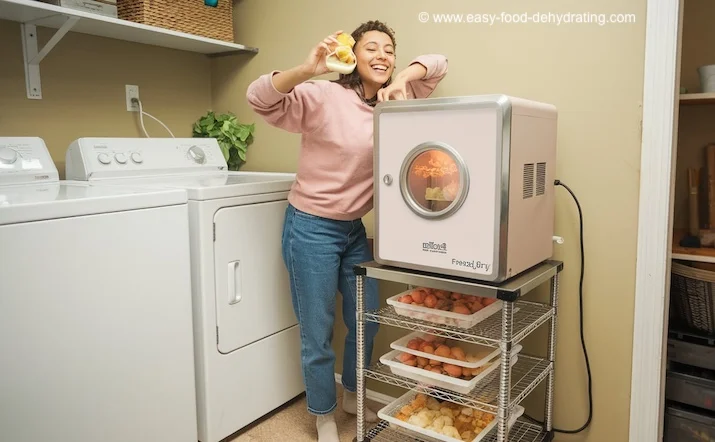 Depiction of a freeze-dryer, not an actual brand
Depiction of a freeze-dryer, not an actual brandWhether you’re a gardener, bulk shopper, or prepping pro, this guide walks you through what you’ll actually pay, hidden costs to expect, and smart ways to save - so you can decide if it’s truly worth the expenditure.
Why Invest in a Home Freeze-Dryer at All?
Dehydrating (which I obviously love!) has its place - but freeze-drying gives food a much longer shelf life and keeps nearly all the nutrients intact. Some Reddit users say they paid off their machines in under two years, especially if they used to spend a lot on commercial freeze-dried foods.
How Does Freeze-Drying Actually Work?
Here's an interesting video by Mountain House that shows you how they freeze-dry at scale.

Freeze-drying retains up to 97% of the food’s nutrients - compared to roughly 60% with dehydrating. Plus, freeze-dried food can last 25+ years. That’s why it’s ideal for emergency preppers, campers, gardeners, and budget-minded families looking to reduce food waste.
The process dates way back to the Incas, who used high altitudes to naturally preserve food. It’s a mix of science and nature: water skips the liquid phase and goes straight from ice to vapor - keeping the color, texture, and nutrients intact.
What Foods Can You Freeze-Dry?
You can freeze-dry a lot more than just fruits and veggies. In fact, this method handles:
- Complete meals
- Meats and dairy
- Soups, snacks, and even ice cream
Freeze-Dryer Prices by Tier: What You’ll Really Pay
Entry-level models start around $1,500–$2,000, perfect for smaller families or casual use.
Mid-range machines run $2,000–$3,000, offering more trays and digital controls.
Premium setups can hit $3,000–$4,000+ and are built for heavy-duty use, small businesses, or co-ops.
Model Type |
Price Range
|
Features |
Best For
|
|
Entry Level |
$1,500-2,000 |
Small capacity (4-6 trays); Basic controls; Standard warranty |
Small families; Beginners; Occasional use |
|
Mid-Range |
$2,000-3,000 |
Medium capacity (6-8 trays); Digital controls; Extended warranty options |
Large families; Regular users; Small business start-ups |
|
Premium |
$3,000-4,000 |
Large capacity (8-10 trays); Smart controls; Premium warranty; Stainless steel |
Heavy users; Small businesses; Community groups |
Model Type
Entry Level
Price Range
$1,500-2,000
Features
Small capacity (4-6 trays); Basic controls; Standard warranty
Best For
Small families; Beginners; Occasional use
Model Type
Mid-Range
Price Range
$2,000-3,000
Features
Medium capacity (6-8 trays); Digital controls; Extended warranty options
Best For
Large families; Regular users; Small business start-ups
Model Type
Premium
Price Range
$3,000-4,000
Features
Large capacity (8-10 trays); Smart controls; Premium warranty; Stainless steel
Best For
Heavy users; Small businesses; Community groups
VEVOR Freeze Dryer Available on Amazon
VEVOR Vacuum Freeze Dryer Machine
This freeze dryer has room for up to 13 pounds of food on four sturdy trays.
It handles big batches of meat, veggies, or fruit with ease.
The vacuum freeze-drying process keeps flavor, texture, and nutrients intact so meals taste fresh for years.
Easy-to-use touchscreen and let it do the work. You can even peek through the clear acrylic door to watch the process.
Quiet, energy-efficient, and built to last, it’s the kind of investment that pays you back with convenience, nutrition, and peace of mind.
As an Amazon Associate, I earn from qualifying purchases — this does not affect the price you pay. Read full disclosure.
NOTE: When you do research on Amazon, make SURE it is true FREEZE DRYER. I saw a LOT of models claiming to be Freeze Dryers, but when you see their temperature range is 86°F to 194°F, you know that is nowhere near freezing! (32°F)
VEVOR vs. Other Home Freeze Dryers: How It Stacks Up
If you’re comparing options before investing, here’s how VEVOR compares to other popular home-use models available in 2025.
| Brand / Model | Approx Price (USD) | Capacity / Trays | Pump / Maintenance | Power / Noise | Cold Trap / Vacuum | Warranty | Best For / Notes |
|---|---|---|---|---|---|---|---|
| VEVOR — 4-Layer Vacuum Freeze Dryer | $3,100–$3,300 | 8.8–13.2 lb per batch (4–6 kg); 4 trays | Oil pump; change oil about monthly (usage-dependent) | 1550 W; ≤ 60 dB | Cold trap ≤ –35 °C; no-load vacuum < 5 Pa | ~1 year | Value capacity Touchscreen, clear door, casters; heavier footprint. |
| Harvest Right — Small / Medium / Large / X-Large | $1,795 → $4,995 |
Small: 4–7 lb • Med: 7–10 lb Large: 12–16 lb • XL: up to 30–40+ lb Trays: 4–7 (size-dependent) |
External pump; oil (standard/premier) or oil-free upgrade | Varies by model; household 110–120 V options | Cold-trap & deep-vacuum specs; model-specific | Typically 3 yr limited (check model/retailer) | Most proven Largest user base, wide parts/support ecosystem. |
| Blue Alpine — Medium / Large (home-use) | $2,995 – $4,095 | Medium: 10–15 lb • Large: 20–25 lb 4–6 trays (model-specific) |
External oil pump; maintenance similar to peers | Household power; faster cycle claims | Low-temp cold trap; strong vacuum (spec-dependent) | ~1–2 years (confirm per model) | Newer competitor Emphasis on faster cycles; smaller support network. |
| Stay Fresh — 5-Tray | $2,600 – $2,800 | 16–18 lb per cycle; 5 trays | External pump; routine oil service (if oil type) | Household power; moderate noise (user-reported) | Home-scale cold trap/vacuum (retailer-listed) | ~1 year (retailer policy may vary) | Retail-accessible Available via big-box stores; verify parts availability. |
Notes: Prices/specs change frequently by retailer, options (pump type), and promotions. Capacities are typical working ranges per cycle.
For an apples-to-apples comparison, confirm tray count, usable area, pump type (oil vs. oil-free), and warranty terms at purchase.
Don’t Overlook These Ongoing Costs
Beyond the price tag, there are running costs and maintenance. Here’s the quick breakdown:
Electricity:
Each batch costs about $2–$4 to run. That’s around $30–$50 per month if you’re using it regularly. Run it during off-peak hours and you could save up to 30%.
Maintenance:
- Vacuum pump oil: $20–$30 every 3–6 months
- Filters: ~$50 annually
- Repairs: Budget around $100–$200 per year
- Cleaning supplies: ~$25
Supplies:
- Mylar bags, oxygen absorbers, containers, labels — expect to spend $50–$100+ annually depending on how often you use your machine.
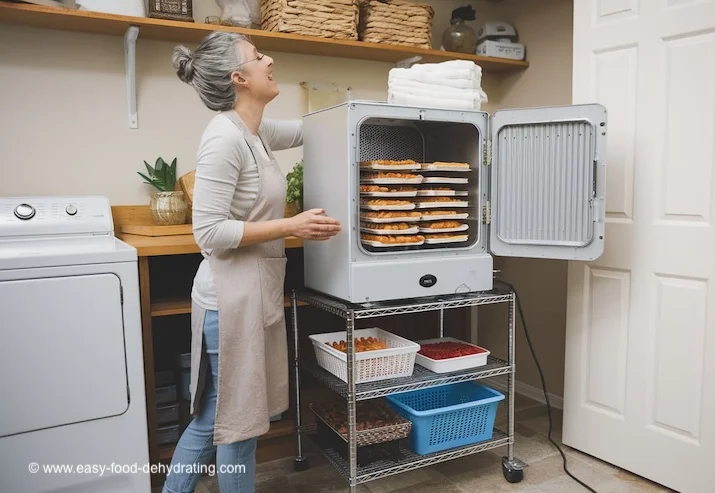 Depiction of a freeze-dryer, not an actual brand
Depiction of a freeze-dryer, not an actual brandCost-Saving Tips: How to Afford a Freeze-Dryer
Some folks get creative. A Reddit user turned their freeze-dryer into a part-time business, selling half the output and breaking even within two years. Others suggest splitting the cost - although not everyone’s eager to share expensive appliances (as one user joked, “We couldn’t even share a hot glue gun in college!”).
You might also:
- Buy refurbished to save 20–40%
- Wait for Black Friday or end-of-year sales
- Consider pre-owned units in local marketplaces
- Set up a neighborhood co-op to share the machine and maintenance costs
Can You Make Money Freeze-Drying?
Yes, people are making money with these things. Here’s how:
Sellable Products:
Pet treats, camping meals, emergency kits, and snack packs - all freeze-dried, shelf-stable, and easy to market.
Services:
- Preserve wedding bouquets
- Offer bulk processing for neighbors
- Teach food preservation classes
- Consult on emergency food prep
Monthly Cost vs. Savings: Is It Financially Smart?
Estimated Monthly Costs:
- $100–$150 (equipment payment if financed)
- $30–$50 (energy)
-
$20–$30 (supplies)
→ Total: $150–$230
Estimated Monthly Savings:
- Reduced food waste: $100–$200
- Buying bulk produce: $50–$100
-
Garden harvests: $50–$150
→ Total: $200–$450
Should You Buy a Freeze-Dryer?
Yes, if you...
- Have a large family
- Garden and grow your own food
- Shop in bulk
- Camp or hike regularly
Maybe not right now if you...
- Live alone
- Have limited space
- Rarely cook at home
Affordable Alternatives to Freeze-Drying
Not ready for the big investment? No problem - here are some solid options:
- Food Dehydrator ($50–$200) – Affordable and easy to use
- Vacuum Sealer ($100–$300) – Great for freezing and portioning
- Canning Equipment ($50–$150) – Classic and shelf-stable
- Bulk Freezer Storage ($300–$600) – Good for short-term stockpiling
Each has its pros and cons, so pick what works for your space, budget, and lifestyle.
What Foods Should You Avoid Freeze-Drying?
To wrap up, here’s a quick list of foods you should not try to freeze-dry:
- Honey and syrups
- Jams and jellies
- Nut butters
- Pure chocolate
- High-fat meats or bones
- Mayonnaise
- Coffee beans
- Butter and most dairy
Freeze dryers work best with foods that contain plenty of water and very little fat.
The items like listed simply don’t freeze solid enough for the sublimation process to occur. Instead, they stay sticky, melt, or release oils that prevent the machine from safely removing moisture.
High-sugar foods such as jams, jellies, honey, and syrups also resist freeze drying because their water activity* is so low that they never become crisp or dry. For best results (and longer storage life), stick with lean proteins, low-fat dairy, fruits, vegetables, and other foods with a high water content.
*Water activity simply means the amount of free water in a food.
Final Thoughts on Freeze-Dryer Costs
If you’re serious about long-term food storage, reducing waste, or even building a small food-based business, a home freeze-dryer could absolutely be worth the cost.
Just remember: it’s not plug-and-play. You’ll need space, a bit of a learning curve, and a plan for storing your output.
And if you're thinking long-term, join freeze-drying groups on Facebook, explore Reddit threads, or watch YouTube tutorials to see what others are doing. It’s a whole world of preservation you can grow into - one freeze-dried meal at a time.
FAQs About Buying and Using a Freeze-Dryer
A question came in the other day: "Can a food dehydrator freeze-dry candy?" My thoughts on this are here.
How long until I break even?
How long until I break even?
Most users recover the cost in 18–24 months through reduced food waste and bulk preservation savings.
Is it hard to learn how to use?
Is it hard to learn how to use?
Not at all. Most people master the basics in a few batches. Recipes and timing vary, but it’s easy to get the hang of it.
Can I freeze-dry anything?
Can I freeze-dry anything?
Nearly! Avoid oily foods like peanut butter or mayo. Fruits, veggies, cooked meals, and lean meats work best.
How loud is a freeze-dryer?
How loud is a freeze-dryer?
Similar to a dishwasher - a soft hum during the vacuum phase. Many people keep them in the garage or laundry room.
How much food can I dry at once?
How much food can I dry at once?
Standard machines hold 6–10 pounds of fresh food per cycle, depending on the model.
Thanks again for reading my 2025 Home Freeze-Dryer Cost Comparison. Whether you decide to invest now or later, the best thing you can do is get informed — and that’s what you just did.
👉 Don’t forget to grab your free 5 Dried Food Recipes You'll Actually Love PDF (below) — featuring carrot soup, minestrone soup, split pea soup, spicy beef jerky, and banana cinnamon rolls.
Get 5 Dried Food Recipes You'll Actually Love
Here's where you can get your copy of our all new
5 Dried Food Recipes (That Actually Taste Great)
They're my all-time favorite easy dried food meals!
Get it here right now.
For Free!
Before You Go...
If you enjoyed this page, tap the ❤️ in the lower right-hand corner.
It saves this page to your Grow bookmarks so you can find it again later.
You’ll also see quick share buttons to copy the link, post to Facebook,
or save it straight to Pinterest.
